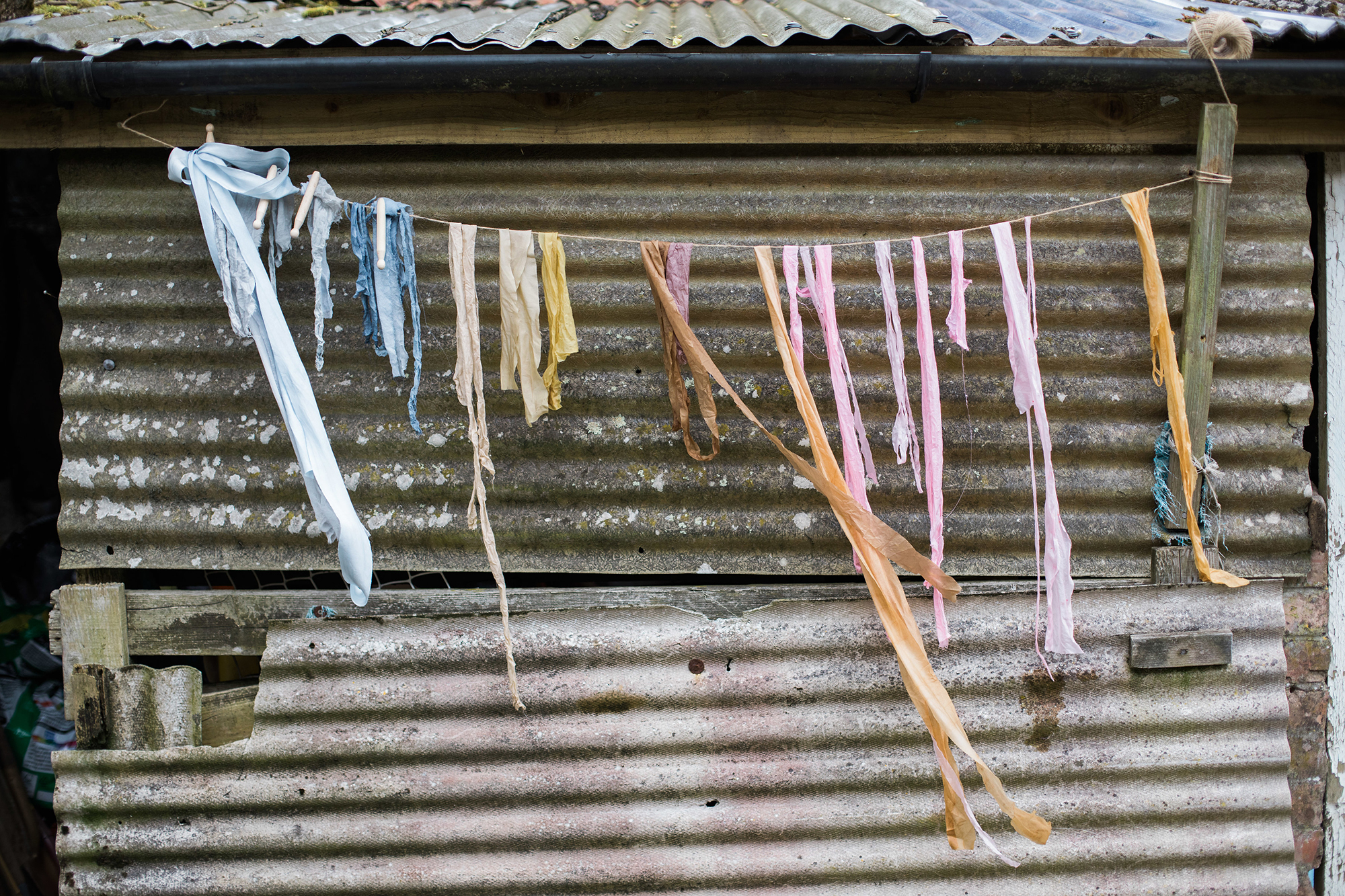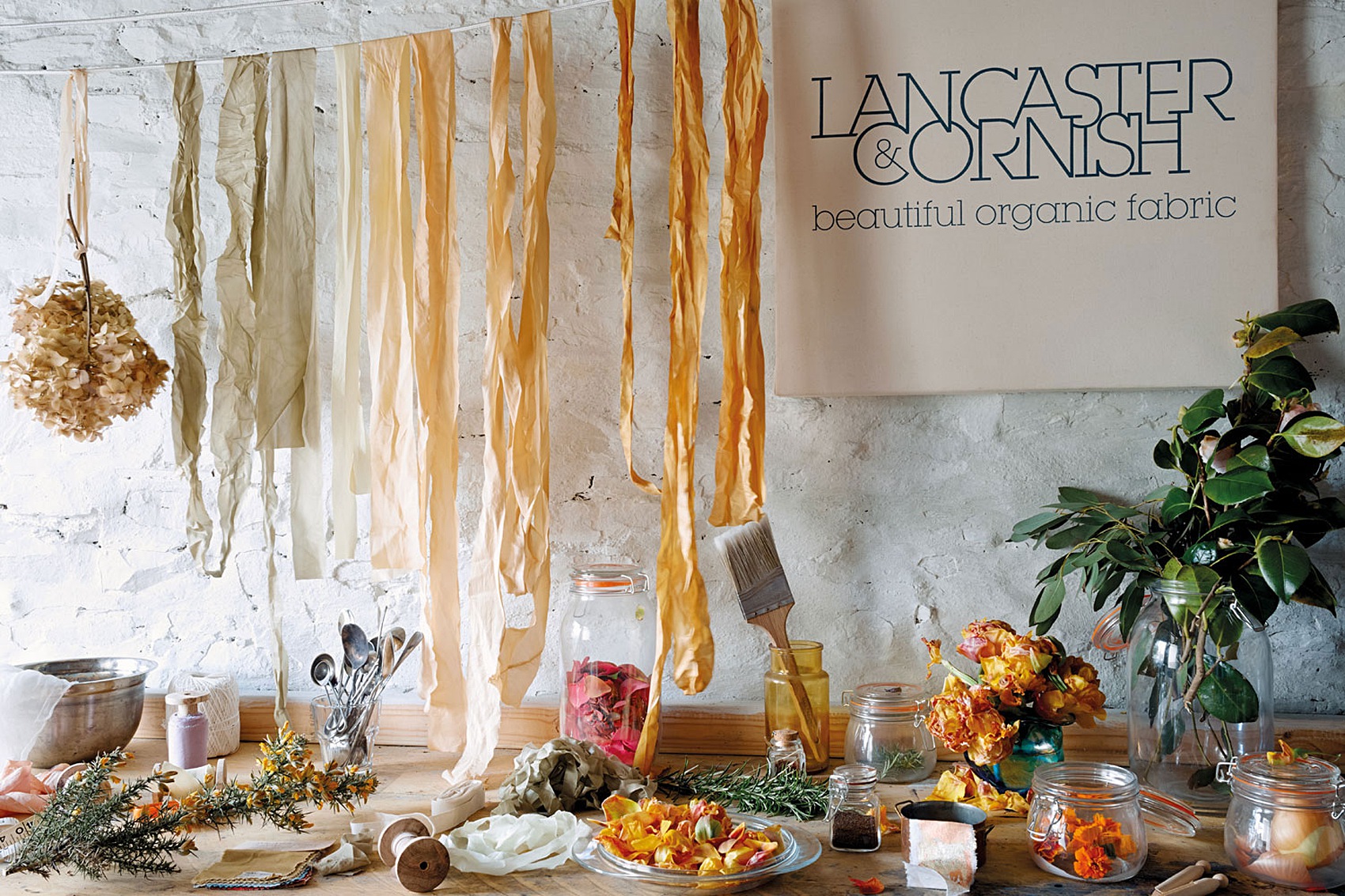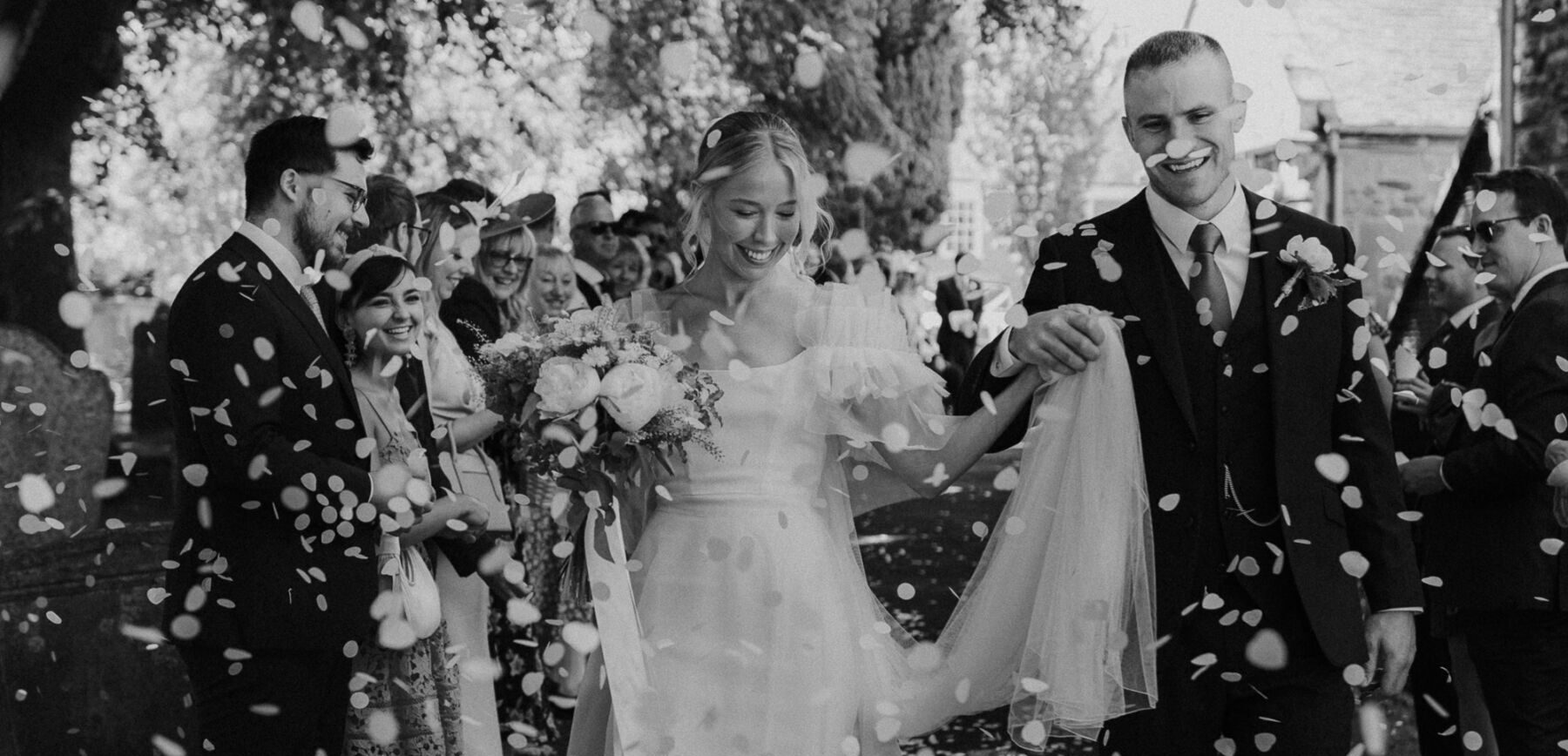The Easter weekend is traditionally one of projects – you might usually hit the DIY store or garden centre to stock up or you might host or attend family gatherings.
We all know that this Easter weekend is going to be different, but remember that right now, love is all about staying home to protect everyone around us.
However, if you’re looking for a project for the weekend, we have the perfect thing for you right here and, if you’re planning a wedding full of autumnal colours, you’re going to love this.
It’s a huge pleasure to welcome the wonderful Sian from Lancaster & Cornish (who we introduced in this feature a little while ago) to share this fabulous tutorial with us all. Sian is a member of our beloved Little Book Wedding Directory.
If you’d like to make your own beautifully coloured ribbons and textiles for your wedding or if you’d just like to try dyeing some eggs to make your own Easter decorations, it’s time to rummage through your cupboards and get creative. Enjoy yourselves!
Lancaster & Cornish + Follow
Dyeing textiles and eggs with store cupboard staples
An introduction
My journey to natural dyeing is self-taught, using an array of books, journals and learning from experts from all over the world. There is a primal instinct to make a mark and preserve colour – perhaps being able to put a bit of the landscape onto cloth makes it feel a bit more permanent. Scientists have discovered evidence of natural reds and oranges in Egyptian tombs dating back to 2600BC and there is archaeological evidence from many 10, 000 years of plant dyeing.
There is something very satisfying about producing colour, and you do that even in lockdown, using scrap of fabric, paper and, if you are lucky, eggs too!
For our brides, this soothing activity can also be a source of inspiration, for weddings moved from season to season, the palette produced using teas and coffee echoes the soft golden browns and golds of autumn, and can be used to create a journal of colour inspiration and a record of your delayed journey to your wedding.
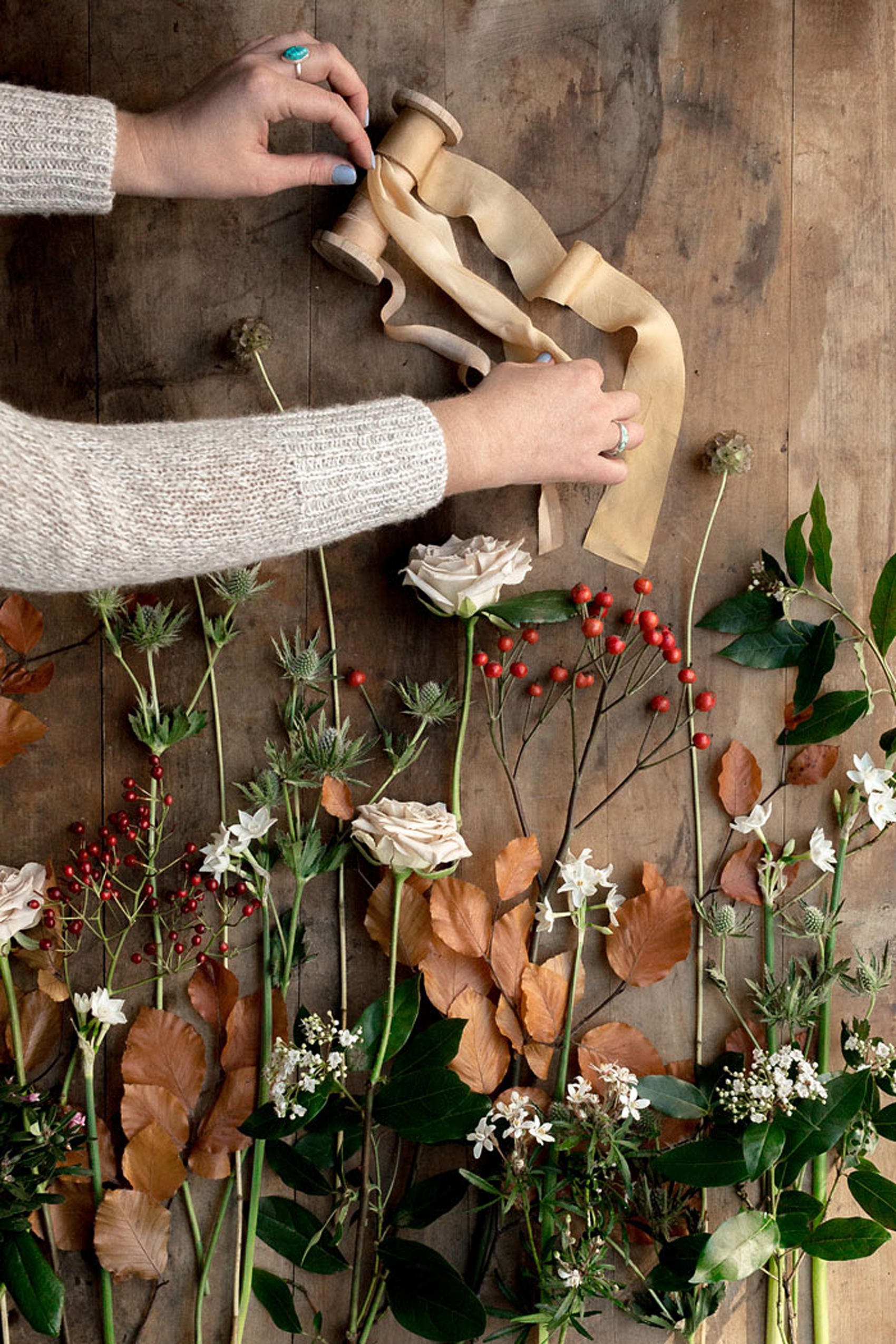
What You Need
Materials
- Tea – black tea, rooibos, herbal or any teas you have, either loose or in bags
- Coffee grounds
- Fabric scraps – Natural fibres such as cotton, linen, hemp or paper if you don’t have any. Tear the fabric into strips for ease of dyeing and so you can use as ribbons.
- Protein fibres – Silk (if you are lucky to have some around), feathers, wool, dried pulses and beans
- Brown or white eggs (optional)
Tools
- Pot(s) for soaking the fabric / eggs / paper
- Utensils for stirring and removing fabric / eggs / paper
- Stovetop, tea kettle, or coffee pot for making the coffee or tea
A Note on Health & Safety: Whilst the ideas suggested here use store cupboard edibles, it is good practice is to use separate pots and utensils for your dye goods than for cooking if possible. Also, please supervise children as there is hot water involved.
Instructions
For tea: Place several tea bags or a few large spoons of tea leaves in to a pot and pour over hot water, around 1 cup. The more tea you add, the stronger the final colour will be. I used a single tea bag/ spoonful of leaves and let them steep for 15 minutes.
For coffee: Put 5 teaspoons of instant coffee into your pot and pour over very hot water, around 1 cup. The more coffee you add in relation to the water, the stronger the final colour will be.
Instructions for Fabric
- If staining pre-used fabric, wash first to remove any soil or food particles just before the staining process and leave damp. For new cloth, rinse well and wring out, but do not let them dry before moving on to the next step.
- Turn off the heat and insert the dampened fabric in to your pot of tea or coffee. Use a kitchen utensil to move the fabric around to make sure the piece is submerged.
- Leave the fabric to take up the dye for at least an hour. The stronger the tea or coffee and the longer you let the cloth steep, the deeper the stain. You can leave it overnight if you want.
- When the cloth is finished steeping, remove it from the brew and briefly rinse in a cold water bath.
- You can leave the fabric to dye naturally, and iron for a beautiful finish.
Instructions for Eggs
If you don’t have eggs, try using dried pulses and beans.
- Hard boil 3 or 4 eggs or as many as you can spare (white or brown – the white gets better colour results, but brown are more common!)
- Follow the steps for making a dye bath of tea and /or coffee and add a tablespoon of vinegar per dye.
- Add cooked eggs to the vessels of cooled dye (or place in a glass of stainless steel container / old can)
- Leave for several hours, or overnight, until you have a colour change
Other ideas for colourful eggs: Turmeric, red cabbage, spinach, nettles, beets
A Note on Cellulose Fibres versus Protein Fibres: Cellulose fibres, such as cotton, linen and hemp will have a different result to protein fibres, like silk. As many natural fibres are pre-treated or have a bleaching agent in them, your result may be lighter than you wanted. You can always dye it again, using a stronger dye bath and leaving for longer.
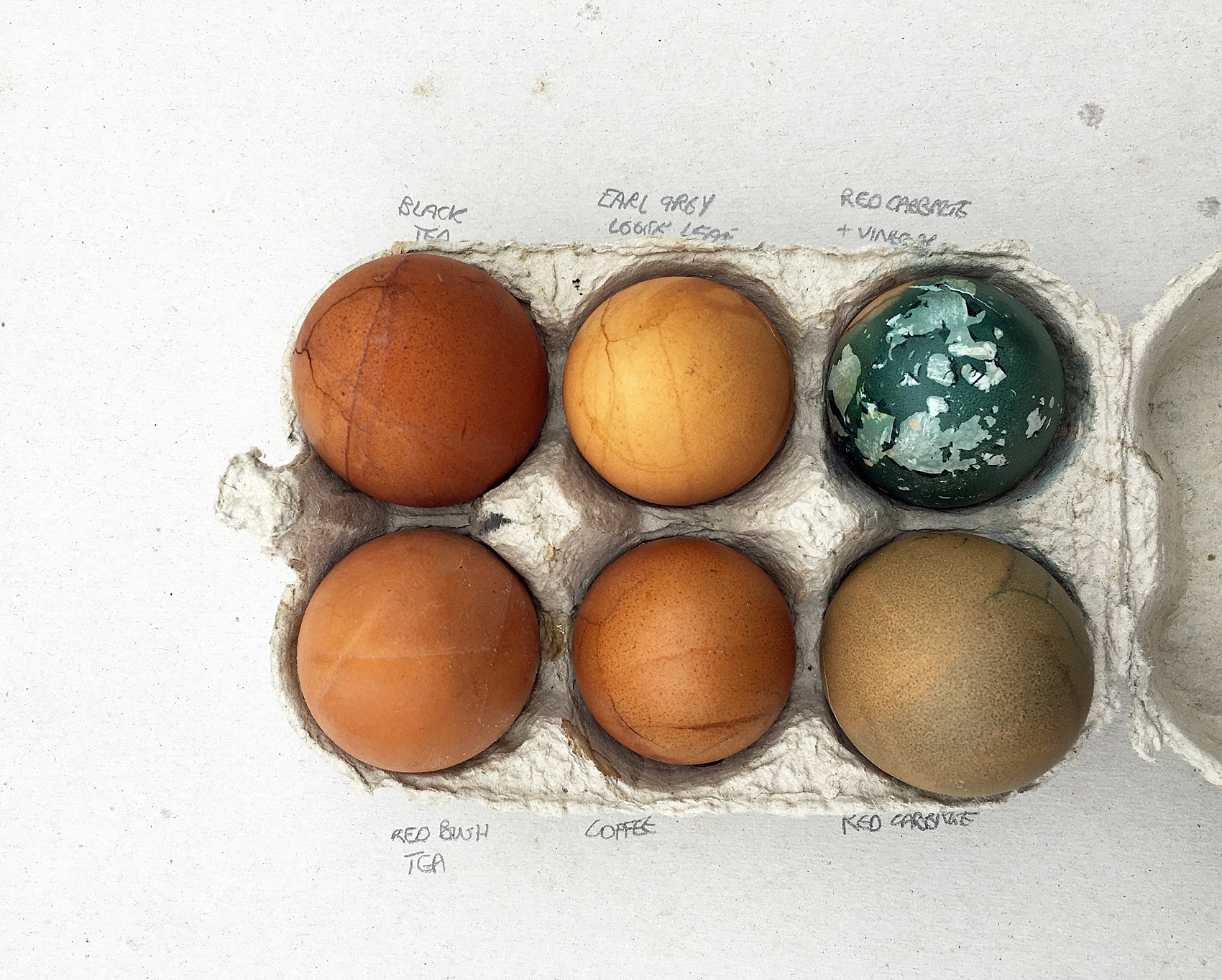
Keeping Records
Once you start on the natural dye journey, you may, like me, become addicted! Keeping records is an important part of the colour journey.
- Cut a sample from your fabric and stick in to a journal with the recipe
- Use any leftover dye to create a colour wheel or swatches
- Dye other natural materials – feathers, dried beans and pulses.
- Experiment with dyes, photograph them over the course of a week and month to see if they fade, and how fast.
To view these instructions as a downloadable .pdf, please sign up to the Lancaster & Cornish newsletter for all the new releases.
Also available soon – a gift for subscribers to L&C, a downloadable inspiration resource on collecting and dyeing, and a series of £10 downloads, ‘Conversations on Colour’, and ‘Natural dye colour activities for kids in lockdown’.
Credits & Thanks
- Main image - ribbons on line - Holes In The World
- Image inside Sian's studio (ribbons hanging) - Anya Rice for MAKE: Cornwall Book
- Hands and Ribbons (Sophie of The Bloomery making the bouquet for Meghan Markel for 2018 Royal Variety Performance, photographer Rebecca Searle)
- Bottom Gallery - Holes In The World
- Scissors & making the bouquet with Autumn coloured ribbons - The Bloomery by Rebecca Searle

